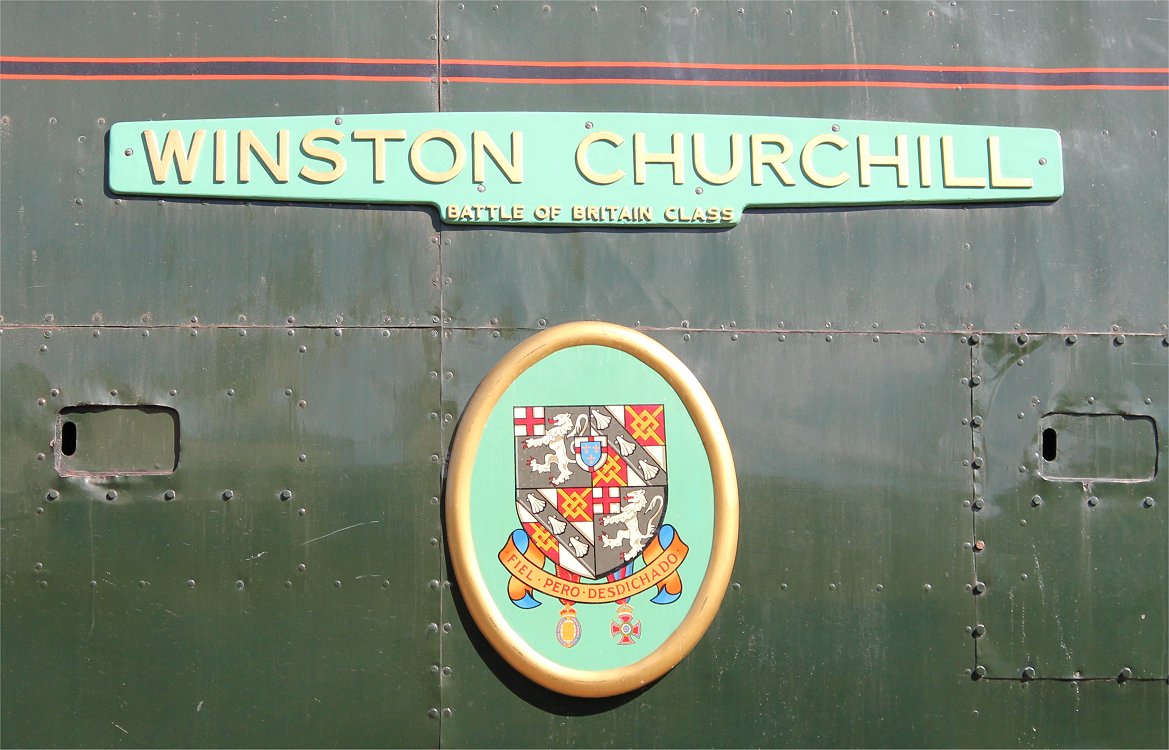It includes in the first and fourth quarters the traditional Churchill arms, a white lion rampant on black field. These were probably borne by his ancestor, the Grandfather of the first Duke of Marlborough (Churchills personal hero) in 1619. The addition of a canton was granted to Sir Winston Churchill (1620-1688) by Charles II, in recognition to his loyalty as an MP and the services Sir Winston had given his father Charles I as Captain of Horse. The canton took the form of a St George's Cross.The Churchill crest is blazoned as a Lion couchant guardant Argent, supporting with its dexter Forepaw a Banner Gules, charged with a dexter Hand appaumée of the first, Staff Or. (This crest, with the dexter Hand appaumée converted into a V-sign, forms the logo of the International Churchill Society and Finest Hour.) The Churchill motto Fiel Pero Desdichado (Spanish for "Faithful but Unfortunate")
The second and third quarters are the Spencer arms. The shield of Hugh le Despencer in the fourteenth century was Quarterly Argent and Gules, in the second and third Quarters a Fret Or, over all a Bend Sable.the Bend Sable had acquired three Escallops Argent (see figure 4), partly to distinguish this branch of the family from other Spencers.
Because the First Duke of Marlborough left no surviving son, the title was allowed to pass to his eldest daughter in 1722 and then (in 1733) to the son of his next daughter, who had married Charles Spencer, Third Earl of Sunderland. The Fifth Duke (1766-1840), who had been born a Spencer, was authorised in 1817 to take and use the additional name of Churchill, in order to perpetuate the name of his illustrious great-great-grandfather. At the same time he was empowered by Royal Licence to quarter the arms of Churchill with his paternal coat of Spencer. It is from this date that the familiar design of Churchill quartering Spencer originates.
The reason the Churchill arms were given precedence to the Spencer arms is because the Marlborough Dukedom was more senior.
The Spencer crest was blazoned Out of a ducal Coronet Or, a Griffin's Head between two Wings expanded Argent, gorged with a Collar gemel and armed Gules. It should be noted that the coronet is part of the crest and not below the helm, Churchill was never a Duke. It is also interesting that both Crests are displayed on two separate helms. In British heraldry if two crests are displayed they are usually, side beside or one over the other, over a single helm.
The shield of the Manner of Woodstock, a blue shield with three fleur-de-lees on a St George Cross was awarded to the Fifth Duke of Marlborough's arms were quartered in 1817 in recognition of his Ancestor's (the first Duke) victory at the Battle of Blenheim in 1705. the manner was given to the first Duke as a reward for this achievement.
The coat of arms was passed down the family line in the traditional way down to the Winston Churchill. He was offered a grant of supporters in 1945 but declined, as he felt the arms were already rather busy. The last element the Order of the Garter, was added in 1953, when Churchill was made a knight commander of the order by the new Queen Elizabeth II, which Churchill reluctantly accepted
This last picture is of the nameplate of the Steam Locomotive SR 21C151 / BR 34051 named in his honor, the same engine that hauled his funeral train to his final resting place and now owned by the National Railway Museum. This unique version oh his arms displays his order of the bath and Companions of Honour.
I hope you enjoyed this as much as I did.

No comments:
Post a Comment